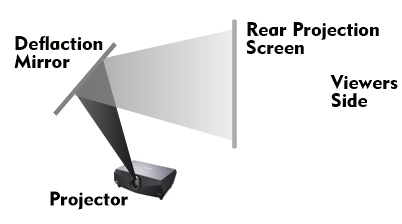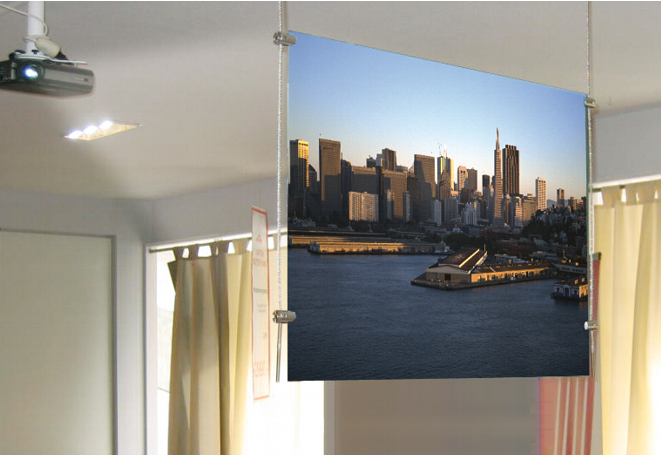rear projection
Projection techniques are divided into front projection and rear projection. The former technique is based on light reflection, whereas rear projection is based on transmission. In the front projection technique, the projection is made from the front onto the screen, i.e. from the viewer's side, in the other case from the rear onto the translucent screen, of the screen type "R".
The principle of rear projection is relatively old and was already used at the beginning of the last century for the projection of pictures and films. In the 1950s, there were also televisions that projected the image onto the screen from behind. In modern projection techniques used in home theaters, both methods are used, that of reflection and that of transmission.
With transmission, the image from the projector is projected from behind onto a partially transparent rear projection screen. Since the projection screen itself absorbs light and thus impairs the transmitting light, rear projection requires high-intensity projectors that produce luminous intensities of 40,000 lumens and more. The light output of rear projection is much higher than that of front projection. Rear projection techniques often work with deflection mirrors that ensure that the projected image is projected onto the projection surface via the deflection mirror. The deflection mirrors have the advantage that the rear projector can stand close to the projection screen. Since the image is projected from behind, it is laterally reversed. However, most projectors can correct this.
The projection surfaces can be made of partially transparent plastic, glass, foil or a projection screen fabric. The light yield of the projection surface is specified as the gain factor. It is the light ratio of the projected light to the light portion that is visible on the viewer side of the projection screen. The gain values for rear projection screens are higher than those for front projection by a factor of 3 to 4, which is due to the low influence of extraneous light. If the projection screen is a sheet, it is usually made of plastic about 3 mm to 6 mm thick and fixed in a frame. In the case of foils, it is the case that these are suitable for application to panes or shop windows and can be flexibly adjusted in size. Another alternative is the projection screen fabric, which is often made of vinyl film or fiberglass and stretched with a tension frame.


